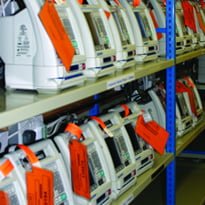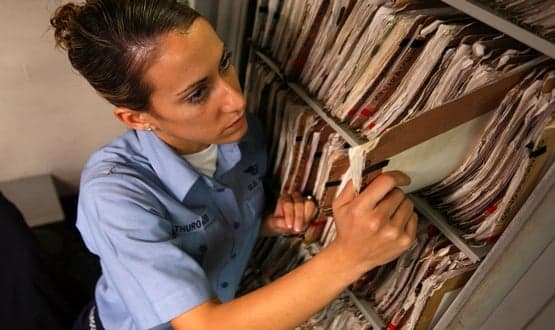Cambridge assets on voyage of Discovery
- 7 August 2012

Cambridge University Hospitals NHS Foundation Trust has implemented an asset tracking system that is being used on more than 2,500 medical devices.
Using Harland Simon’s ‘Discovery’ radio frequency identification system, the medical equipment library at the trust has started ‘tagging’ devices such as syringe drivers and feeding pumps.
Each active tag has a unique ID that is scanned by staff using personal digital assistants when visiting departments.
Speaking to eHealth Insider, Simon Dawkins, supervisor of the library, said that it decided to install the system as the department handles around 42,000 devices, which go out for more than 185,000 loan days per year.
“The devices move around throughout the day so we have no idea where they are. There are various regulations and our asset register needs to know where the devices are.
“We looked at various different systems and the number one choice that everybody likes is the wi-fi solution, which live tracks a device in a system as it moved. But from a financial context we couldn’t afford it, as we don’t have wi-fi across the whole of the hospital,” he explained.
Technicians and water samplers who visit different hospital departments are tasked with scanning the devices, so that within a working week all the medical devices that are tagged are scanned.
The trust then runs a report comparing the information collected by the PDAs with the device location information contained in the hospital’s asset management database.
Dawkins said that by running the reports once a week, the trust’s database is averaging 17% inaccuracy in terms of identifying the location of devices, down from 35% at the start of the project.
Cambridge is set to increase the number of devices tagged to 3,500 by the end of the year. It also hopes to remove the requirement to compare the two sets of data by October, by immediately inserting the scanned locations into the trust’s asset management database. The project has also been extended to incorporate biometric equipment.
“Before we had to manually audit twice a year and that would take for hours because you couldn’t get at the patient bedside area.
“When we did some tests we found four wards took over eight hours to audit and now four wards take just over an hour.
“We looked at various different types of system but Harland and Simon just stood out. The trust has an eHospital project, which is about improving patient data, and the RFID system will be incorporated within that in the future.
“We are convinced it works and that it has saved us an awful lot of money,” he added.




